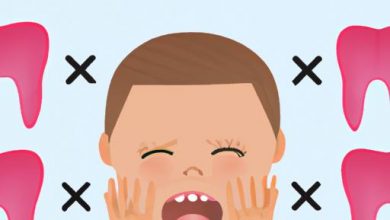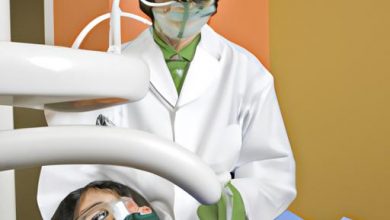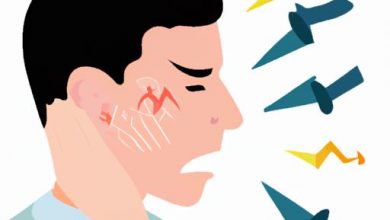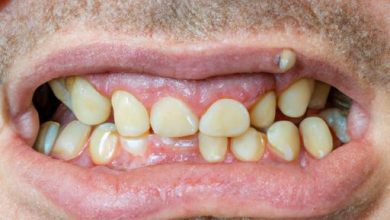What is Tooth Decay Class 4?
Tooth decay is a common dental problem that affects people of all ages. It occurs when the bacteria in your mouth produce acids that erode the tooth enamel, leading to cavities. The severity of tooth decay is classified into four classes based on the extent of damage to the tooth structure. In this article, we’ll focus on tooth decay class 4.
Understanding Tooth Decay
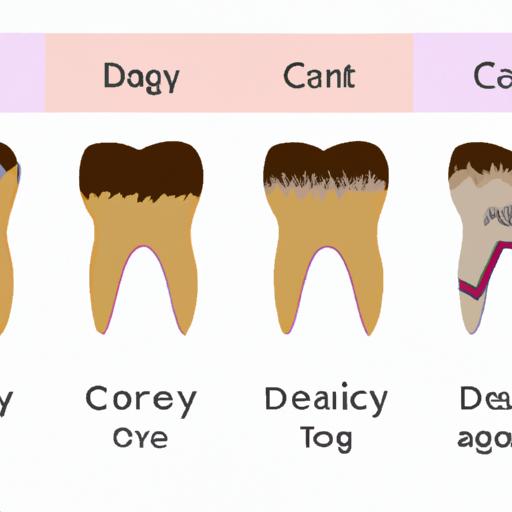
Before delving into tooth decay class 4, it’s essential to understand what causes tooth decay and the stages involved. Tooth decay occurs when bacteria in your mouth produce acids that erode the tooth enamel. This erosion leads to the formation of cavities, which can progress if left untreated. The stages of tooth decay are:
Stage 1: White Spots
This stage is the earliest stage of tooth decay, where white spots appear on the tooth surface. The white spots are a sign of demineralization, which means that the tooth enamel is losing minerals. At this stage, the tooth decay is still reversible.
Stage 2: Enamel Decay
At this stage, the tooth decay has progressed from the enamel to the underlying dentin layer. The decay causes a small hole or cavity to form on the tooth surface.
Stage 3: Dentin Decay
If left untreated, the tooth decay progresses to the dentin layer, which is softer than the enamel. At this stage, the decay causes the tooth to become sensitive to hot and cold temperatures, sweet foods, and drinks.
Stage 4: Pulp Decay
This stage is the most severe, where the decay extends to the pulp or nerve of the tooth. The decay causes severe pain, and the tooth may require a root canal or extraction.
Types of Tooth Decay
Tooth decay can occur in different forms, and the classification depends on the location and extent of the decay. The common types of tooth decay are:
Smooth Surface Decay
This type of tooth decay occurs on the smooth surfaces of the teeth and is usually caused by bacteria and plaque buildup.
Pit and Fissure Decay
This type of tooth decay occurs on the chewing surfaces of the molars and premolars. The decay occurs in the grooves and pits of the teeth, making it hard to clean with a toothbrush.
Root Decay
Root decay occurs on the tooth’s root surface and is common among older adults who have receding gums. The exposed roots are more susceptible to decay since they lack the protective enamel layer.
Understanding the types and stages of tooth decay is crucial for preventing and treating dental problems. In the next section, we’ll focus on tooth decay class 4, its causes, symptoms, and treatment options.
Tooth decay is classified into four classes based on the extent of damage to the tooth structure. Each class has a specific location and severity of decay. The classifications of tooth decay are:
Class 1 Tooth Decay
This type of decay occurs on the chewing surfaces of the molars and premolars. Class 1 decay is the most common type of decay and is characterized by a small cavity or hole on the tooth surface.
Class 2 Tooth Decay
Class 2 tooth decay occurs on the sides or between the teeth. The decay affects the enamel, dentin, and pulp of the tooth, and it’s more severe than class 1 decay.
Class 3 Tooth Decay
This type of decay occurs on the front teeth, specifically on the proximal surfaces. Class 3 decay is less common than class 1 and 2 decay, and it’s usually caused by poor oral hygiene.
Class 4 Tooth Decay
Class 4 tooth decay is the most severe type of decay, and it’s characterized by the decay of the entire tooth structure. The decay affects the enamel, dentin, and pulp, and it’s usually caused by poor oral hygiene, a diet high in sugar, or a lack of dental care.
In the next section, we’ll focus on tooth decay class 4, its causes, symptoms, and treatment options.
Classifications of Tooth Decay (Continued)
Class 4 Tooth Decay
Class 4 tooth decay is the most severe type of decay, and it’s characterized by the decay of the entire tooth structure. The decay affects the enamel, dentin, and pulp, and it’s usually caused by poor oral hygiene, a diet high in sugar, or a lack of dental care.
Class 4 tooth decay is also commonly known as advanced decay or extensive decay. It can lead to significant pain, tooth loss, and severe dental problems if left untreated. This type of decay can be prevented with good oral hygiene practices, regular dental check-ups, and a healthy diet.
Tooth Decay Class 4: Definition, Causes, Symptoms, and Treatment Options
Definition
Tooth decay class 4 is the most severe type of tooth decay, where the decay affects the entire tooth structure, including the enamel, dentin, and pulp. The decay can lead to pain, sensitivity, and tooth loss if left untreated.
Causes
Tooth decay class 4 is usually caused by poor oral hygiene, a diet high in sugar and carbohydrates, and a lack of dental care. The bacteria in your mouth produce acids that erode the tooth enamel, leading to cavities and decay. If the decay is left untreated, it can progress to the underlying dentin and pulp, causing severe pain and tooth loss.
Symptoms
The symptoms of tooth decay class 4 include:
- Severe toothache
- Tooth sensitivity to hot or cold temperatures
- Pain when biting or chewing
- Visible holes or pits in the teeth
- Discoloration of the teeth
- Bad breath or a bad taste in the mouth
Treatment Options
The treatment for tooth decay class 4 depends on the extent of the decay and the severity of the symptoms. The dentist may recommend one or more of the following treatment options:
-
Fillings: The decayed part of the tooth is removed, and the cavity is filled with a dental filling material.
-
Root Canal: If the decay has progressed to the pulp or nerve of the tooth, a root canal may be necessary to remove the infected tissue and save the tooth.
-
Crown: If the decay has caused significant damage to the tooth, a crown may be necessary to restore the tooth’s structure and function.
-
Extraction: If the tooth is severely decayed and cannot be saved, the dentist may recommend extraction.
Prevention is always better than cure when it comes to tooth decay class 4. Good oral hygiene practices, regular dental check-ups, and a healthy diet can go a long way in preventing tooth decay and maintaining good oral health.
Prevention of Tooth Decay Class 4
Preventing tooth decay class 4 is essential to maintain good oral health and prevent severe dental problems. Here are some of the ways to prevent tooth decay class 4:
Oral Hygiene Practices
One of the best ways to prevent tooth decay class 4 is by practicing good oral hygiene. Brush your teeth twice a day with fluoride toothpaste, floss daily, and use mouthwash to kill bacteria in your mouth. Also, make sure to clean your tongue, as bacteria can accumulate on its surface.
Regular Dental Check-ups
Regular dental check-ups can help detect and treat tooth decay class 4 before it progresses. Your dentist will conduct a thorough examination of your teeth and gums and recommend appropriate treatments to prevent and treat tooth decay.
Diet and Nutrition
Eating a healthy diet is crucial for preventing tooth decay class 4. Avoid foods and drinks that are high in sugar, as they can cause the bacteria in your mouth to produce acids that erode the tooth enamel. Instead, eat foods that are rich in calcium, phosphorus, and vitamin D, which can help strengthen your teeth.
Conclusion
In conclusion, tooth decay class 4 is a severe dental problem that can lead to tooth loss and other severe dental problems. It’s essential to understand the causes, symptoms, and treatment options to prevent tooth decay from progressing to class 4. Practicing good oral hygiene, regular dental check-ups, and a healthy diet can help prevent tooth decay class 4 and maintain good oral health. Remember, prevention is always better than cure, and taking care of your teeth is crucial for your overall health and well-being. At Zahnweiss Info, we’re dedicated to helping you live your healthiest life by providing the latest updates on dental health news, treatments and therapies, inspiring patient stories, and expert advice.

